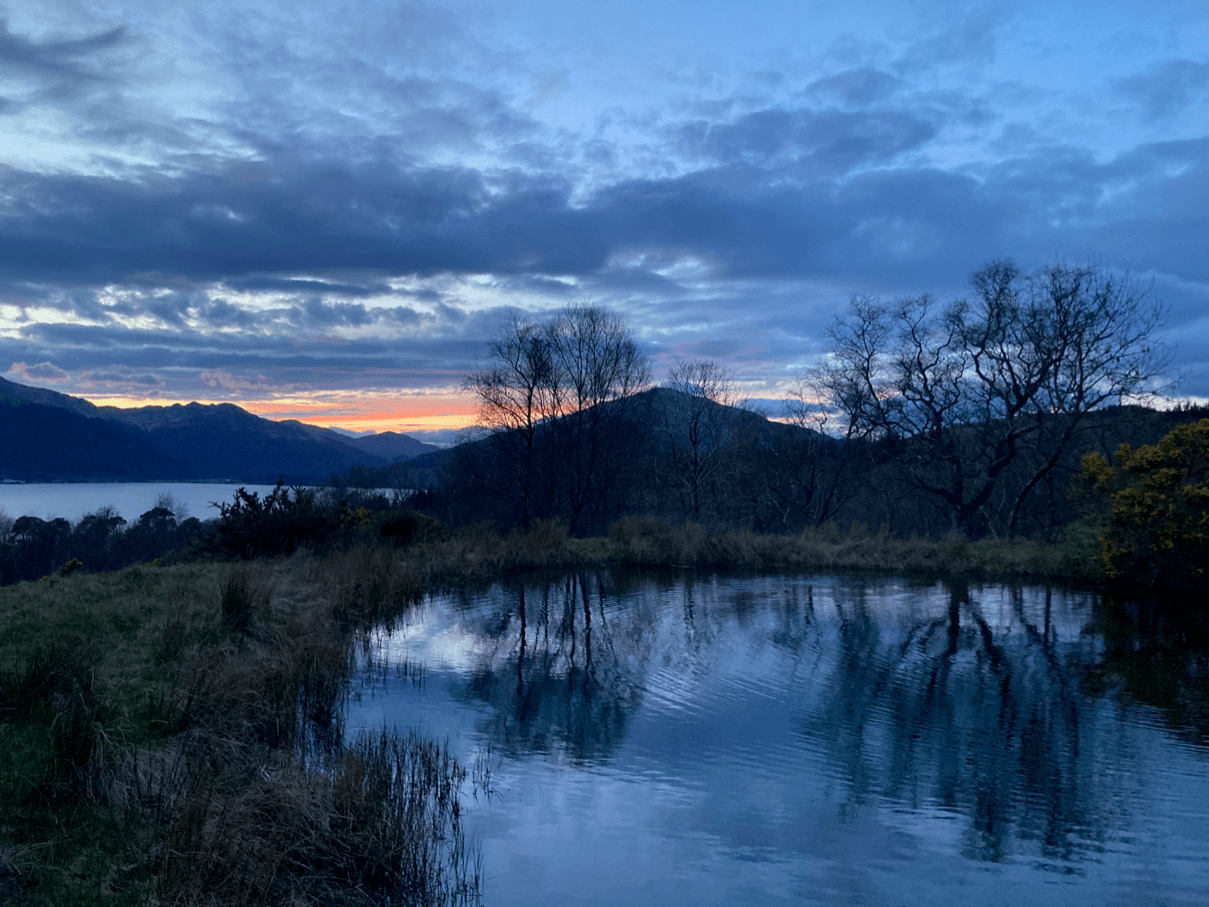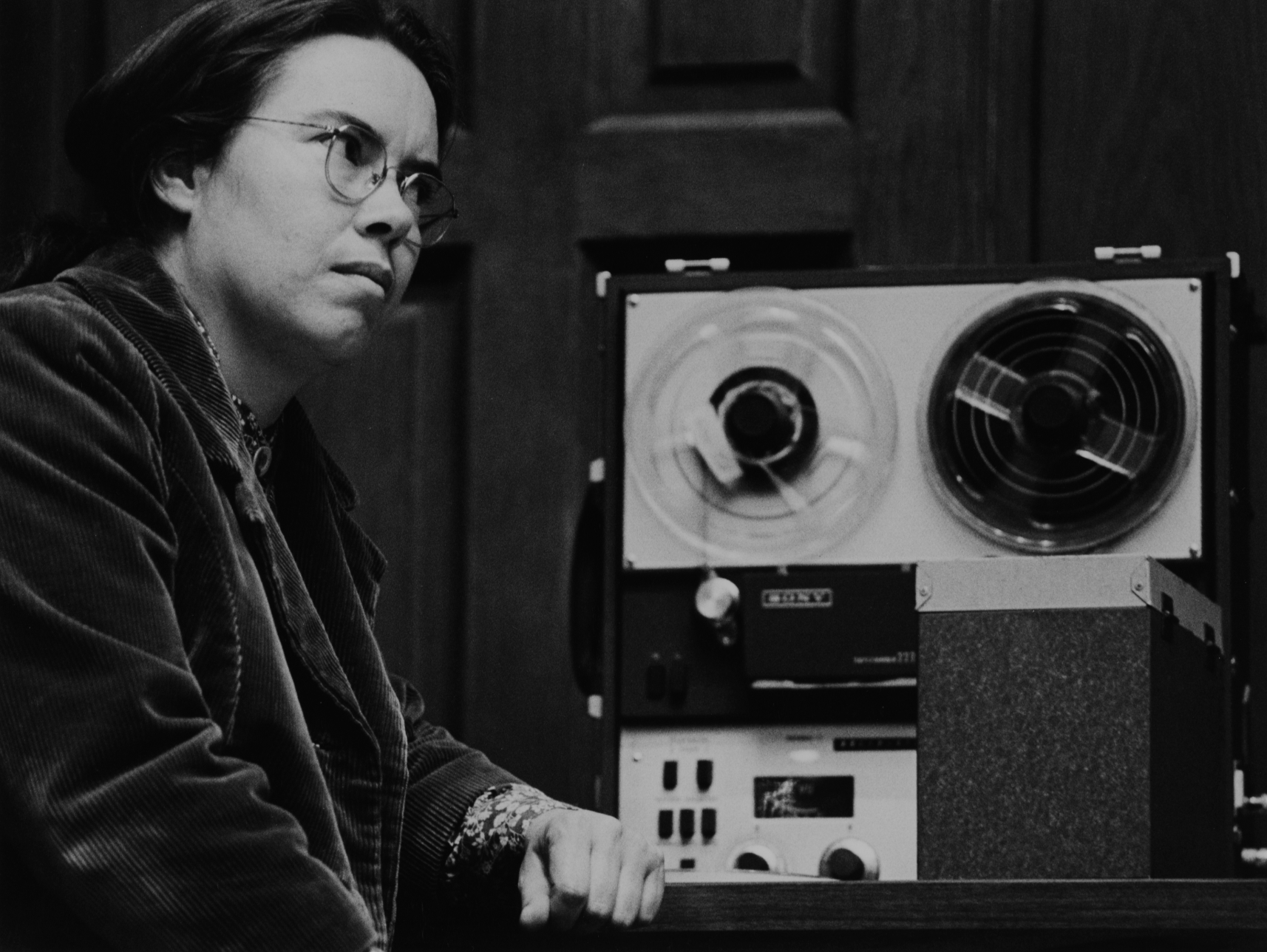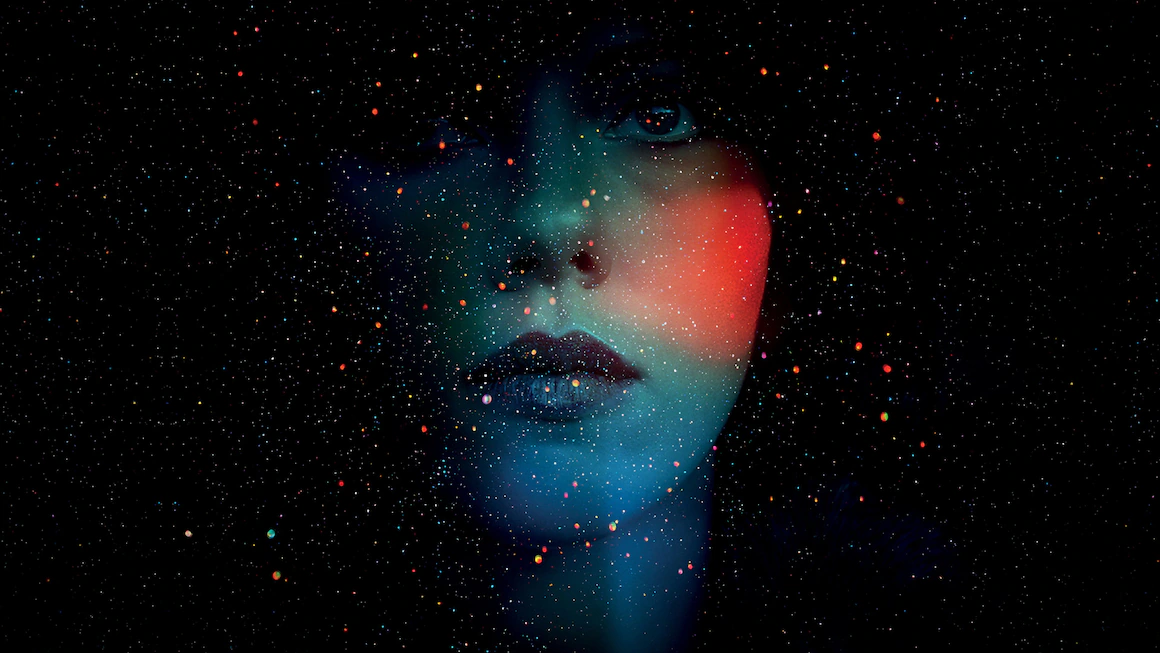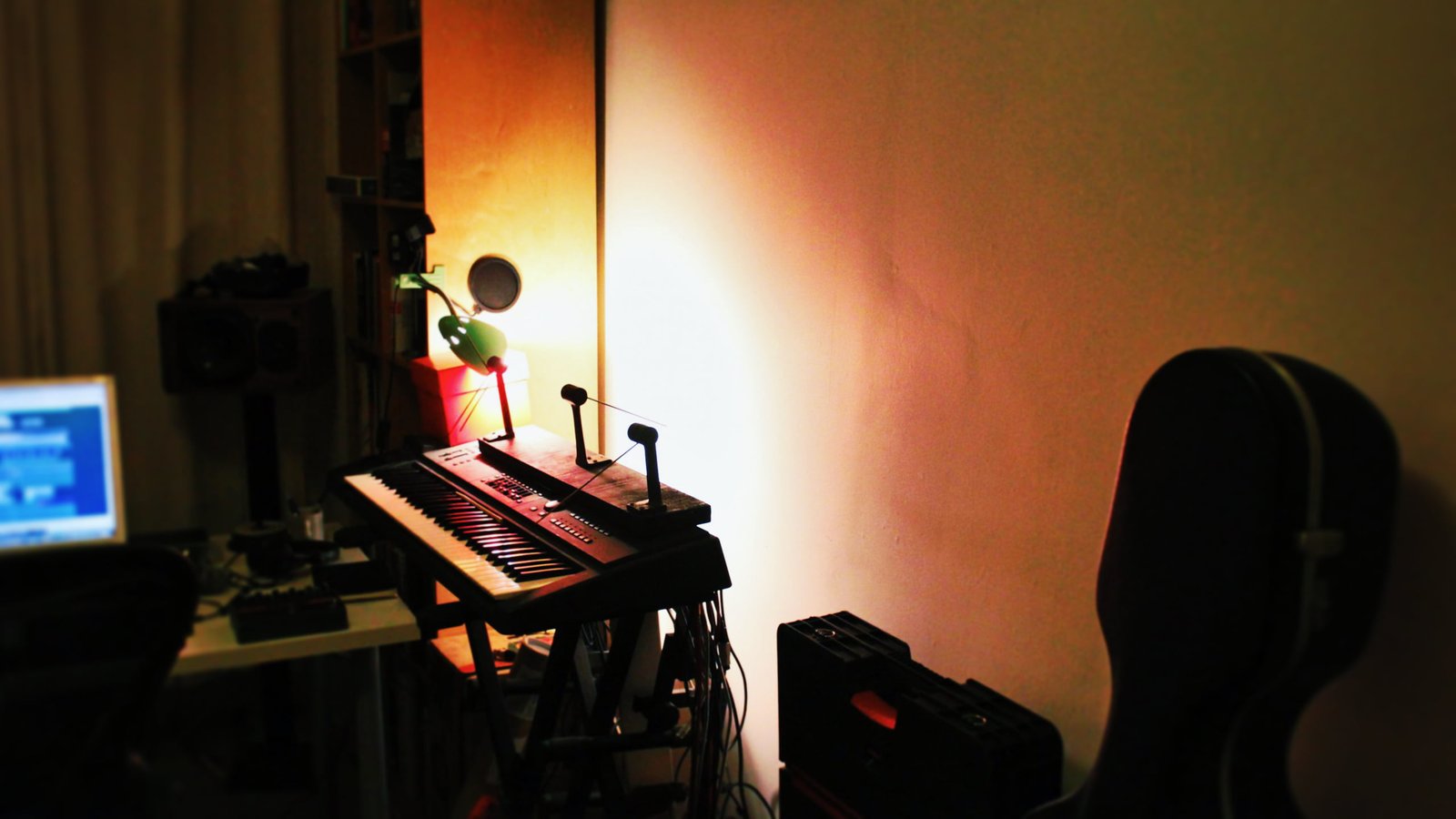Tactics for Creativity
I thought I’d talk a bit about some background tactics for creativity and the process of making music. The background to a piece of music is the ground upon which it is built, and the foundations upon which the creation rests so it has a very important place in the process. If the mind is chaotic and the process haphazard, then this will translate to the creation process and to the end result.
- Space, rest, removal of sense of expectation. Creation needs a certain amount of space in my experience. If there are too many factors encroaching, then the freedom of creation is compromised and the results are often disappointing. This can be factors such as financial pressure, an expectation from the work on the part of a third party, or just being burnt out from doing too much. Making space for creation is of fundamental importance, and removing as many of the pressures and distractions from the process as possible is highly desirable. This can be such things as:
-
-
-
- living somewhere cheap to remove the financial burden
- self-releasing your music or art to remove the third party obligations
- never reading reviews of your work, to release you from a perceived sense of expectation
- having another job, to release the financial pressure from the creative part of your life
- not having another job, to prevent the time pressure on your artistic practice
-
-

View from work desk at Cove Park in Scotland
- Working space. The environment in which we work can either aid or hinder our endeavours. A workspace that is tailored to your way of working, with the ergonomics of your process in mind, can significantly reduce the friction between conceiving an idea and implementing it. This may vary from project to project, so I always find it a good idea to analyse the process in hand, and decide what features of the workspace should take priority. For example, if I am creating a piece of music that involves making an instrument, I will put away all my synths and dedicate a large table just to tools and practical manufacturing. For a mixing project I might replace my master keyboard with a mixing desk with faders, and install a second set of mini monitors. A focus of intention and a removal of clutter also helps hone the mind and create a single point of attention. I take a lot more care these days to have a neat and tidy working environment, but I also understand the appeal of an organised chaos that occasionally prompts you with new and unexpected input. This is one reason I don’t organise my bookshelves too carefully; the serendipity of finding a book you weren’t looking for, but which influences the question in mind, is always welcome. In the past I have sometimes taken this chaotic approach too far, until I realised that it was adversely affecting my creative process. Check my current studio here.
- Meditation. Another way of creating space in your life is by encouraging the mind to be silent, or to turn towards the infinite. Meditation takes many forms, and different people may find one technique works much better for them than another. There are also many reasons for meditating, and this may also define what type of meditation you are drawn to. There are numerous apps and guides available to try out the various approaches, and generally short and regular is the best way to start. Creatively, this is about loosening the tangle of thoughts and preoccupations that habitually rise up in the mind over time, and with the sense of expectation, judgment and second-guessing that can hamper the creative flow. However the benefits far exceed just the creative life; an increase in inner silence and the ability to reflect rather than to consistently act, are both inherently beneficial to life. It may take some time to get the hang of it and, as with most things, it rewards patience. There is a whole lot more to be said about meditation and its place in life, both creative and otherwise.

- ‘The first idea’. There is something in the first idea, the first take, the initial thought. The number of times I have recorded a rough vocal take in immediate response to something I have written, only to find that I cannot better it later, even with multiple passes and superior attention to detail, is beyond count. A germ of an idea often appears as if from nowhere, containing within it a complete framework of how it may be accomplished. If acted on quickly, these ideas usually appear to be the most vibrant and meaningful, and produce the best results. However, they can easily be corrupted by excessive thinking and deconstruction, so there is a skill in maintaining the tension of creation and exploration without letting the original idea get lost. This is also true on the smaller scale of individual creative decisions; when working from a place of inner quiet, the first response to a problem is often the right one. [One welcome development in many software environments is that they are constantly ‘listening’ to what you are playing, and recording in the background, so that if you do have a happy accident while playing, it can be quickly recovered and used. It is often during these moments of no tension, and no expectation, that we can produce the best ideas.]
- Change. When it comes to creativity, often all change is good change. The world we live in is alive and in flux at all moments and on every level. The moment we become stagnant in our approach to life and creativity, we are operating against the natural state of things. By allowing change into our working life, we open the door to new possibilities and new energy. This could be:
-
-
-
- move from working in the studio to working on the laptop in a cafe
- change from one software to another, especially if you are very used to working in one in particular.
- change from one medium to another. Stretch your artistic legs. Make the artwork for your album.
- change from working during the day to working only at night, even if just for a week.
-
-
- Allowing for accidents, and actively encouraging the unexpected. We like to believe that we know exactly what we’re doing, and that we need only turn our prodigious talents in a direction of our choosing in order to create something of beauty. However the reality, in my experience, is that providence, serendipity and flow have more to do with the best creative outcomes than any of my targeted efforts. When I am creating I like to include working practices that encourage these potentially fortuitous outcomes, such as assigning the MIDI part of the drums to a new synth, or calling up a channel preset created for one purpose and using it on something totally different. I also love synths which allow randomisation of parameters, as this can result in some unholy nonsense, but also some totally unexpected sounds. Favourites are: Melodonia, Phonec, Waldorf Attack

- Oblique Strategies. This is related to the above point, but deserves its own mention. Brian Eno and Peter Schmidt created Oblique Strategies as a means of overcoming creative block and seeding new ideas and approaches, and it has lost none of its relevance. It consists of a series of cards with various unusual suggestions related to process or tactics, and can push you into uncharted territories very quickly. There is a website version at http://stoney.sb.org/eno/oblique.html . I also like the idea of having your own set of oblique strategies, that you add to over time, and which work for you specifically.
- Deep Listening. The term ‘deep listening’ was first coined by Pauline Oliveros to describe an approach to sound that is more receptive and meditative than our more usual Western modes of listening. It is especially suited to listening for subtlety, nuance and intention in created sound, and can help in making music that is more deep and intuitive. It is also valuable as a more purely meditative practice when out in nature, or the world in general, honing our abilities to really hear what is going on around us, without the incessant mental analysis that usually accompanies it. Also check the Reading page for books in this line.

Pauline Oliveros, the originator of Deep Listening
- Active vs passive background. Our creative background can be loosely defined in these terms:
- Passive/Internal – These are our pre-existing conditions of thought, temperament and upbringing that factor into our tastes and musical decision making processes. We are largely not in conscious control of these factors, but being aware of them can help us to decide how much we wish to let them hold sway in our creative life. For example, if I am brought up in a classical background, exposed largely to Mozart and Bach, I may have a particular value system that biases me against the use of electronic timbres, or music that is not structured like a concerto. By understanding my bias in this direction, I might decide to force myself to make a drone album using only a Buchla synth, and thus broaden my internal horizons. There is an enormous creative energy that can be released by unburdening ourselves of pre-conceptions.
- Active/External- The active background I define as the conscious decisions made at the outset of a creative process. This might be research conducted into the use of a certain instrument, or the analysis of a genre of music I wish to emulate. For me the active research is an important part of the process of creating a new piece of music, defining some of the parameters of creation, and giving direction to my thought. Some examples might be: nature, statistics, symbolism, other artists, etc etc. My one caveat is that I make the active intellectual investigations, but then put them to one side once the creative process has started. I can always revisit them later if I reach a creative impasse, but I don’t want intellectual noise to interfere with the flow of creation itself.



